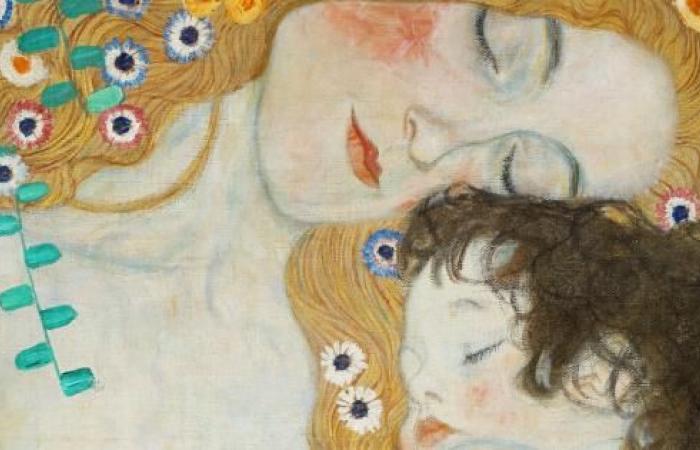From 28 June to 15 September 2024 the National Gallery of Umbria hosts the exhibition dedicated to Gustav Klimt’s masterpiece, The three ages (1905), extraordinarily loaned by the National Gallery of Modern and Contemporary Art in Rome. This exhibition inaugurates a new exhibition cycle of the National Gallery of Umbria: A masterpiece in Perugia.
Radio Monte Carlo is the official radio of the exhibitions of the Galleria Nazionale dell’Umbria
During the summer the museum offers its public the opportunity to admire and learn in depth about a work of particular importance in the career of a famous artist, which is accompanied by a selection of works by other contemporary authors, with the aim of illustrating the the era of its creation, the historical cultural context and the themes addressed. In the case of Klimt, he will be introduced by Galileo Chini, of whom some drawings, paintings and ceramics inspired by the style of the Viennese master are on display.
At the beginning of the exhibition, you can immerse yourself in Klimt’s world thanks to a virtual room – created with the contribution of the Perugia Foundation – where the artist’s major paintings are illustrated and described in great detail. The three agesbefore you can observe it in real life.
The layout of the exhibition refers to the taste of the Viennese Secession of which Gustav Klimt was one of the founders. Crossing the portal is therefore equivalent to crossing an ideal stargate which leads the visitor to admire Klimt’s work in an “analogous environment” in terms of atmosphere and suggestions to that of the Venice Biennale of 1910, where the masterpiece was exhibited The three ages, and the International Exhibition of Rome in 1911 which also consecrated Klimt’s everlasting fame in Italy. The exhibition is enriched by listening in the background to the song Transfigured Night (Transfigured night), composed by the Viennese Arnold Schoenberg.
The three ages
The theme of the three ages recurs often in the history of art, but focuses mainly on man. It is very rare for female subjects to illustrate this destiny, whereas the relationship between young and old in the painting of the past focused on the juxtaposition of the Virgin Mary and Saint Anne. Klimt approaches this theme from a secular point of view, making it a tribute to the complexity of the female body, which changes appearance over the years, but above all accompanies a different attitude towards life. The three women in this masterpiece also become the metaphor of a civilization, which at the beginning of the twentieth century is leaving behind a classical vision of the world to immerse itself in the anxieties of the twentieth century, prompted by new psychoanalytic studies and increasingly exacerbated political relations. In this problematic vision of history, Klimt debuts with an elegant, complex and extremely innovative style, which will achieve resounding success, still shared by the general public today.
Three female bodies squeezed between two wings of crystalline rain, which falls from a compact black surface. Behind them, signs light up which help to enhance the emotion defined by their appearance. The older woman, helpless, desperate, has a body with a strong volume, which imposes itself with her shadows brought to the height of her belly, back and neck, while she explores the space with her feet painted in perfect perspective. The young mother has an almost two-dimensional body, white, diaphanous, lightened by the absence of feet, but Klimt focuses our attention rather on her face, immersed in blonde hair – like that of Botticelli’s Venus – scattered with flowers they sprout from nuclei that allude to its generating power. She fell asleep with her daughter in her arms, portrayed in a mirror position with respect to the old woman, with whom she closes the circle of life.
Access to the exhibition is included in the Gallery’s entrance ticket, which also allows a visit to Fulvio Roiter. Umbria, a love story.
All information on the website www.gallerianazionaledellumbria.it






